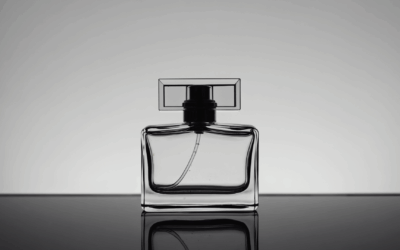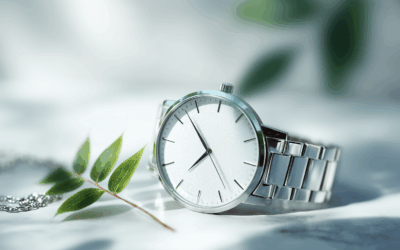Fine art photography is a captivating art form that’s all about harnessing your creative potential and discovering your unique vision as a photographer. It’s about capturing images that evoke emotions, tell stories, and showcase your artistic flair. This comprehensive guide will walk you through everything you need to know, from understanding fine art photography’s core concepts to mastering techniques that will help bring your creative ideas to life. Are you ready to explore the secrets of fine art photography? Let’s dive in!
Table of Contents
- Defining Fine Art Photography
- Key Elements of Fine Art Photography
- Developing a Personal Style
- Lighting Techniques
- Composition Basics
- Post-Processing Tips
- Building a Fine Art Photography Portfolio
- Exhibiting and Selling Your Work
- Frequently Asked Questions
Defining Fine Art Photography
Fine art photography, also known as artistic or creative photography, is a genre that focuses on the artist’s vision and interpretation rather than simply capturing a subject. With fine art photography, the final image is meant to convey a powerful message, evoke an emotional reaction, or provoke thought.
Unlike other photography genres, fine art photography is characterized by its strong emphasis on aesthetics, composition, and conceptual depth. This is why fine art photographers often make deliberate choices when it comes to lighting, composition, and post-processing techniques in order to create visually striking images that resonate with viewers on a deeper level.
Key Elements of Fine Art Photography
While there’s no strict formula for creating fine art photographs, there are certain elements and principles that can help give your images a distinctive artistic quality.
1. Concept and Storytelling
In fine art photography, having a strong concept and narrative is paramount. This allows you to imbue your images with deeper meaning and make a lasting impression on your audience. Your concept could be derived from personal experiences, emotions, or observations, as long as it connects with your artistic vision.
2. Mood and Atmosphere
Creating a particular mood or atmosphere in your images is another effective way of evoking emotions and setting the tone for your story. This can be achieved through careful use of color, lighting, and composition techniques.
3. Aesthetic and Composition
The visual components of your image, such as its color palette, composition, and overall aesthetic, play a crucial role in determining its artistic merit. Fine art photographers often employ unconventional or experimental techniques to create visually striking images that defy traditional photography norms.
Developing a Personal Style
Developing a unique and distinctive personal style is essential for any fine art photographer, as it helpsset your work apart from others and establishes a recognizable brand. Here are some tips to aid you in finding and refining your own style:
1. Study the works of other artists
Begin by studying the works of renowned fine art photographers, painters, and other visual artists. Analyze their techniques, compositional elements, and color schemes. This will help you gain a better understanding of how each artist has honed their unique artistic voice, inspiring you to find your own.
2. Experiment and practice
Practice makes perfect, and experimentation is key to growing as an artist. Don’t be afraid to try new techniques, work with unique subjects, or capture different locations. Over time, you’ll start noticing recurring themes and patterns in your work, which may help you define your personal style.
3. Reflect on your experiences and emotions
Your photography can be a powerful form of self-expression. Reflect on your personal experiences, emotions, and beliefs, and try to incorporate these insights into your images. Conveying a strong message or emotion through your work can help you cultivate an authentic artistic voice.
Lighting Techniques
Mastering lighting techniques is essential for any photographer, but it’s particularly crucial for fine art photographers. Capturing the right lighting can greatly enhance your images and produce the desired mood, atmosphere, and visual impact.
1. Natural light
Working with natural light enables you to make the most of the available sunlight and create a soft, organic feel in your images. Experiment with different times of day and weather conditions to achieve various effects and moods.
2. Studio lighting
Studio lighting provides fine art photographers with greater control over the final outcome of their images. Using various types of artificial lights, modifiers, and reflectors, you can create a wide range of effects, from dramatic shadows to soft, evenly lit scenes.
3. Low-key lighting
Low-key lighting is a technique that involves using minimal lighting to create images with stark contrasts, deep shadows, and a strong sense of drama. This style is often used in fine art and portrait photography to create a visually striking and moody atmosphere.
Composition Basics
Effective composition is key to producing visually engaging images. Understanding the fundamental principles of composition can help you create striking and aesthetically appealing photographs.
1. Rule of thirds
The rule of thirds is a basic guideline that involves dividing your frame into nine equal parts using two equally-spaced horizontal lines and two equally-spaced vertical lines, and placing your subject or focal points where these lines intersect. This technique can help create balance and visual interest in your images.
2. Leading lines
Using leading lines is a powerful compositional tool that helps guide the viewer’s eye through the image and towards the main subject. Leading lines can be created using natural or man-made elements in the scene, such as roads, rivers, or architectural features.
3. Negative space
Negative space refers to the empty areas surrounding your subject, which can be used to create a sense of depth and balance in your image. Utilizing negative space can add an air of sophistication and artistic merit to your photographs.
Post-ProcessingTips
Post-processing is an integral part of fine art photography, allowing you to enhance your images and bring your creative vision to life. Here are some tips to help you master the art of post-processing:
1. Color grading
Color grading is the process of adjusting the colors and tones in your image to create a specific mood or visual style. Experiment with different color palettes, hues, and saturation levels to find the best combination that complements your concept and enhances the overall look of your photograph.
2. Dodge and burn
Dodging and burning are editing techniques that allow you to selectively lighten (dodge) or darken (burn) specific areas of your image. This can help draw attention to your subject, create depth, and add dimension to your photograph.
3. Retouching and refining
Although fine art photography values authenticity and artistic expression, it’s still essential to refine your images through retouching. Remove any unwanted elements, correct minor imperfections, and ensure your image remains visually captivating.
Building a Fine Art Photography Portfolio
A strong portfolio is crucial for any fine art photographer, as it showcases your best work, demonstrates your artistic range, and helps you attract potential clients or gallery representatives. Here’s what to consider when building your portfolio:
1. Quality over quantity
Choose only your best and most compelling works for your portfolio. It’s better to have a smaller number of exceptional images than a larger collection of mediocre ones.
2. Consistency
Though variety can be essential for showcasing your versatility, it’s also important to maintain a level of consistency in your work. This demonstrates your mastery of a specific style while creating a cohesive and memorable portfolio.
3. Presentation
First impressions count, so ensure your portfolio is professionally presented, easy to navigate, and visually appealing. A well-designed website or physical portfolio can greatly enhance the impact of your work and leave a lasting impression on viewers.
Exhibiting and Selling Your Work
Exhibiting and selling your fine art photographs can be both rewarding and challenging. Here are some tips to help you get started:
1. Networking
Networking with other photographers, gallery owners, and collectors can lead to valuable connections and potential exhibition or sales opportunities. Attend photography events, workshops, and openings to expand your network and stay updated on the latest trends and opportunities in the fine art photography world.
2. Submit your work to competitions and galleries
Entering competitions or submitting your work to galleries for consideration can help get your work noticed and increase your chances of exhibitions or sales. Be selective and target competitions or galleries aligned with your style and genre.
3. Use online platforms
Utilize online platforms such as social media, photography forums, and online art marketplaces to showcase your work and connect with potential clients or collectors.
Frequently Asked Questions
- What makes a photograph “fine art”?
- A fine art photograph is one where the artist’s vision and interpretation take precedence over capturing a subject. It’s characterized by its strong emphasis on aesthetics, concept, andemotion, and typically showcases creative techniques and compositional elements not found in other genres of photography.
- Do I need formal education or training to become a fine art photographer?
- While formal education or training can help refine your skills and provide exposure to different techniques and viewpoints, it’s not mandatory to become a fine art photographer. Many successful artists in the field are self-taught, relying on practice, experimentation, and learning from the works of other artists.
- How can I price my fine art photographs for sale?
- Pricing fine art photography can be challenging. Factors to consider when setting a price include the cost of materials, time spent on the project, edition size (if selling prints), and the current market rates for similar works. It’s essential to research what other photographers in your niche charge, and not undervalue your work.
In conclusion, fine art photography offers a medium for expressing your individual creativity and unique vision. By understanding its core principles, mastering various techniques, and continually honing your personal style, you can excel in this exciting and rewarding genre. Now, take your camera and unleash your creative potential!




0 Comments